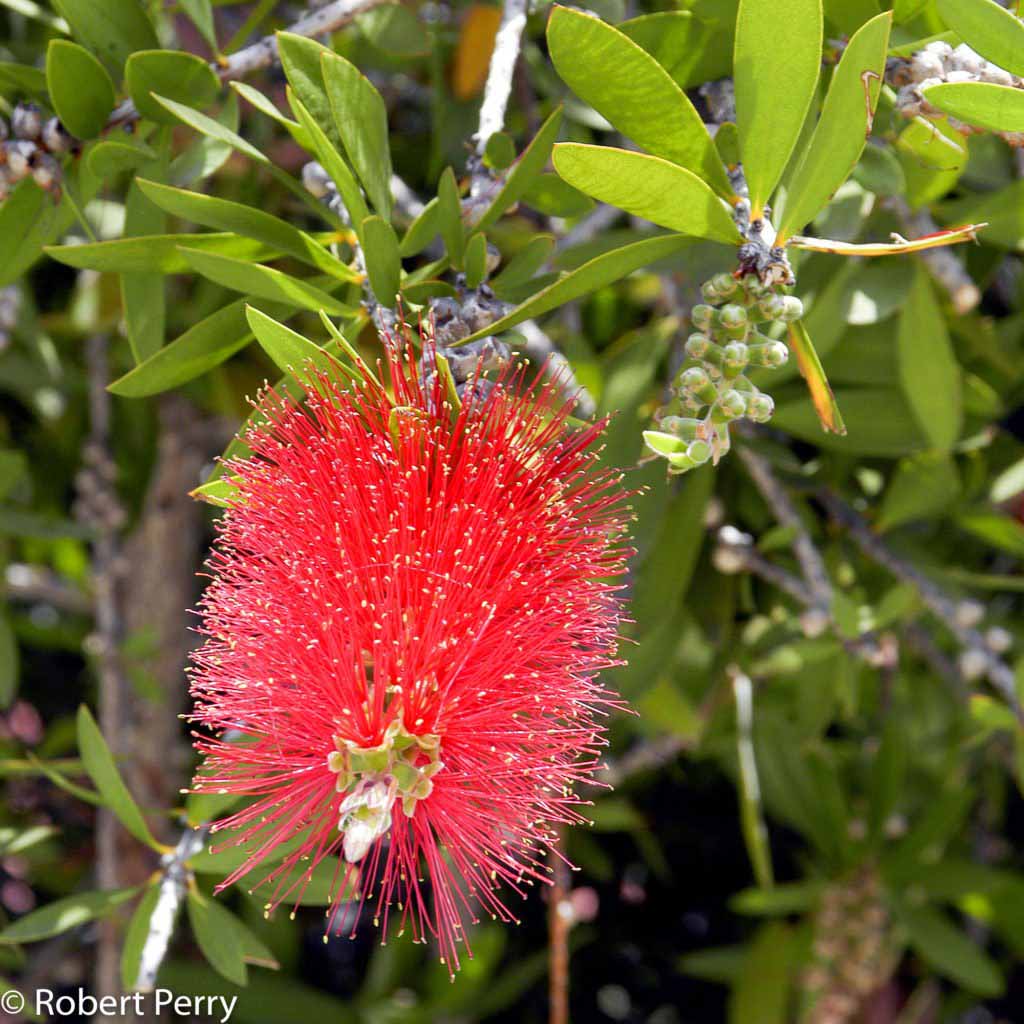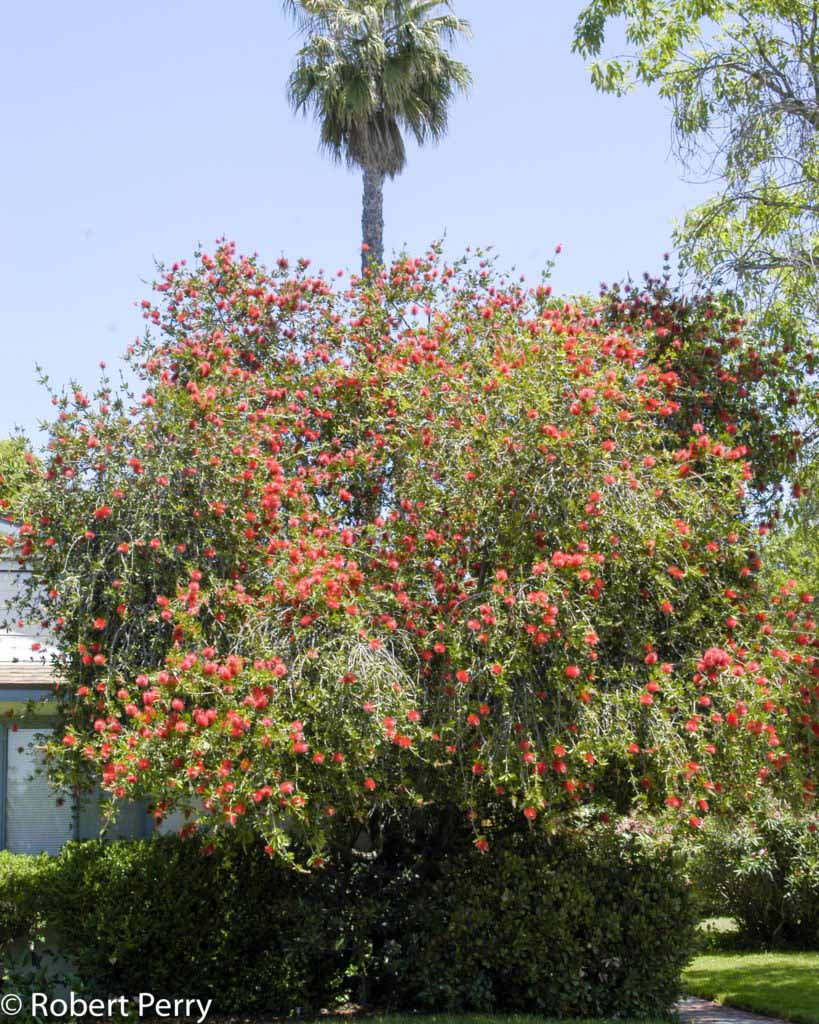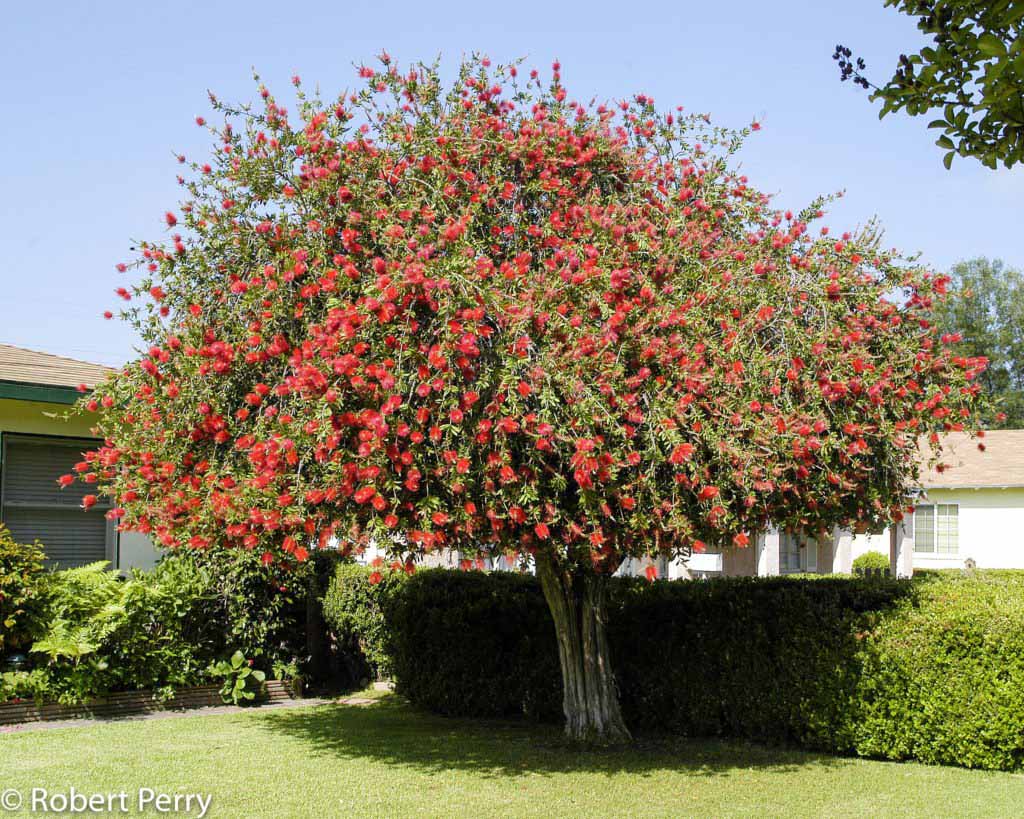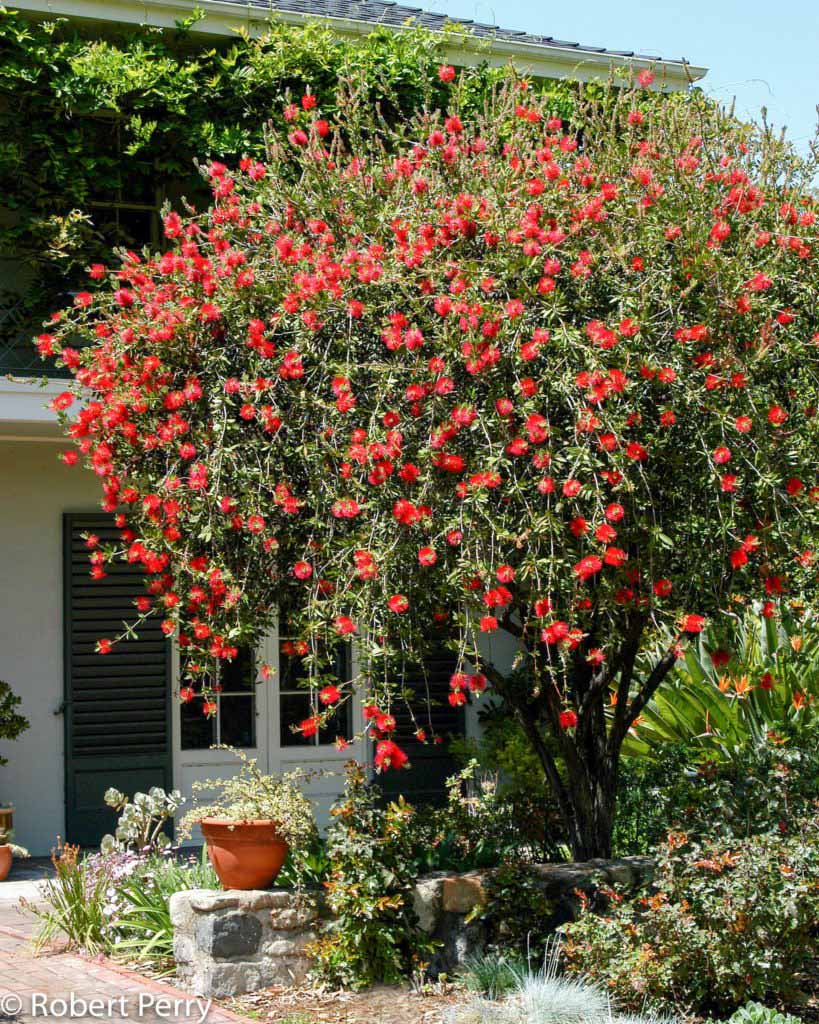Please note:
For most situations, we would not recommend installing this plant in new gardens, landscapes, or plantings in southern California.
Depending on the situation, some of our favorite California native alternatives to Lemon Bottlebrush are Toyon, Sugar Bush, Lemonade Berry, and Desert Willow.
This plant profile is included in this site as a reference for two primary reasons:
- If you already have this plant in your landscape, this information can be used to know how to care for it.
- If you already have this plant in your landscape, you can use this information to learn which of our recommended plants have the same recommended watering needs, making them potential choices for grouping together if you will be adding new plants to the existing area.
In general, instead of this plant, we recommend planting appropriate California native plants whenever possible.
In addition to their beauty, California native plants offer the most additional benefits beyond just low water use, including habitat for the birds, butterflies, and pollinators who evolved here with them. This adds value and beauty in your landscape beyond just a pretty plant, allowing the landscape to actively contribute to the environment instead of just using less water. You can find our top recommended native plant choices on our Plant Finder by selecting “California Native” and learn more about California native plants here.
To learn what exactly California native plants are and how they are different from other low water plants, visit this link.
For visual interest or other reasons, some people may also want to mix in other non-native low-water demanding plant choices even though they do not have the same ecological value as native plants. For that reason, we feature a number of non-native waterwise selections on this site as well. However, we see native plants as the best “go to” for most landscape or garden choices! We encourage people to consider planting at least 50% of their landscape to native plants. See our Garden Designs section or visit our Waterwise Demonstration Garden in Montclair for plenty of inspiration.
————————————————————————————————————————————————
The Lemon bottlebrush can be grown as a large shrub or small tree with a mounding habit 15-25 ft. tall, 15-20 ft. wide. Citrus-scented leaves are pointed and 3-4 in. long; new growth emerges soft and reddish before maturing pale green and hard. Red flowers comprised of numerous stamens occur in large brush-like spikes, 3-4 in. long, during mid spring and also intermittently all year.
Lemon bottlebrush comes from coastal habitats of eastern Australia. It is widely grown throughout the Inland Empire and is adaptable to heat, sun, aridity and wind. It grows best with moderate amounts of water throughout the year, but its tough foliage and bark enable established plants to tolerate periods of summer drought. It is available from nurseries as a single trunk tree or shrub and tolerates being a clipped hedge. Flowers of the Lemon bottlebrush are used by many types of birds. Several cultivars are available, including compact forms.



